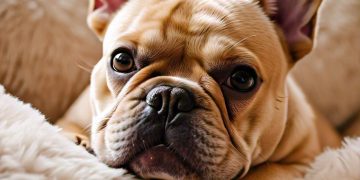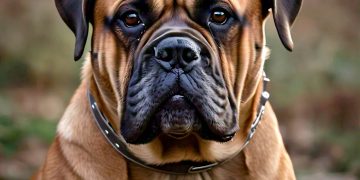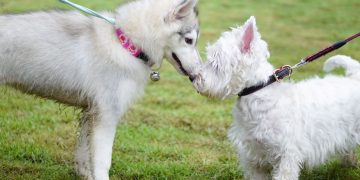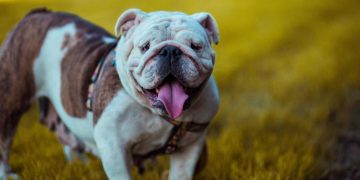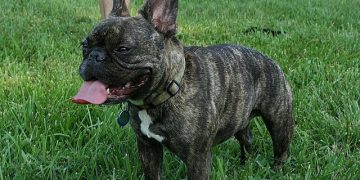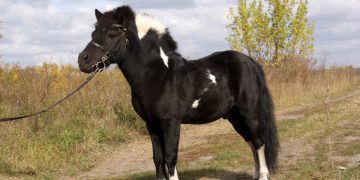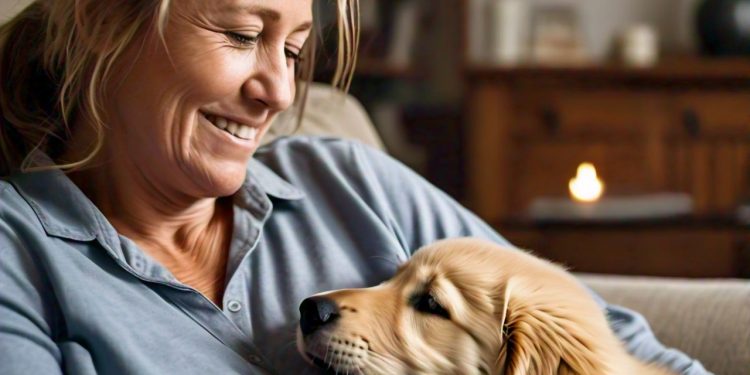Bringing a new puppy into your home is an exciting experience, but it also comes with the responsibility of caring for their health and well-being. One of the most important aspects of puppy care is grooming. Regular grooming not only helps your puppy look their best but also ensures they stay healthy and comfortable. Whether you have a fluffy breed that requires frequent brushing or a short-haired puppy that just needs occasional maintenance, grooming is an essential part of their care routine. In this comprehensive guide, we’ll break down everything you need to know about grooming your new puppy—from bathing and brushing to nail trimming and ear cleaning.
Why Grooming is Important for Your Puppy
Grooming is more than just making your puppy look cute. It has several health benefits that contribute to their overall well-being:
- Skin Health: Regular grooming helps remove dead hair, dirt, and debris from your puppy’s coat, reducing the risk of skin infections.
- Parasite Control: Grooming allows you to spot parasites like fleas, ticks, or mites early, which can then be treated before they cause serious problems.
- Improved Circulation: Brushing your puppy’s coat helps stimulate blood flow to the skin, promoting healthy hair growth.
- Bonding Time: Grooming is a great way to bond with your puppy and build trust, especially during the early stages of puppyhood.
- Comfort: Regular grooming keeps your puppy comfortable by preventing matting, tangles, and dirt buildup that could cause irritation.
1. Start Grooming Early
Introducing your puppy to grooming from an early age will help them get used to the process, making future grooming sessions easier for both of you. The key is to start slow and make grooming a positive experience. Here are some tips to help your puppy feel comfortable:
- Introduce Grooming Tools Gradually: Let your puppy sniff and investigate the grooming tools (brushes, nail clippers, etc.) before using them. This will help them get used to the items.
- Short, Positive Sessions: Start with short grooming sessions, gradually increasing the duration as your puppy becomes more comfortable. Always praise and reward your puppy after each session to create positive associations.
- Handle Their Paws, Ears, and Teeth Early: Get your puppy used to having their paws, ears, and teeth touched gently. This will make tasks like nail trimming and ear cleaning easier in the future.
2. Brushing Your Puppy’s Coat
Brushing is one of the most important aspects of grooming, especially for puppies with longer or thicker coats. Brushing not only keeps their fur tidy but also prevents matting, tangling, and hairballs. The type of brush you use will depend on your puppy’s coat type:
For Short-Haired Puppies:
- Use a Bristle Brush: A soft bristle brush works well for puppies with short coats. It removes loose hair and dirt without irritating the skin.
- Brush Weekly: Short-haired puppies usually need brushing only once a week to keep their coats clean and healthy.
For Long-Haired Puppies:
- Use a Pin or Slicker Brush: Puppies with long or double coats require more frequent brushing to prevent tangles and mats. A pin brush or slicker brush is ideal for detangling their hair.
- Brush Daily: Long-haired puppies should be brushed every day to prevent their fur from becoming matted, especially in areas like behind the ears, under the legs, and around the collar.
For Curly or Wavy-Haired Puppies:
- Use a Comb and Slicker Brush: If your puppy has curly or wavy hair, like a Poodle or Cockapoo, use a slicker brush and a comb to work through their curls without causing damage.
- Frequent Brushing is Key: Curly coats tend to mat quickly, so they need regular grooming sessions, ideally every day or every other day.
3. Bathing Your Puppy
Bathing your puppy is an essential part of grooming, but it’s important not to bathe them too frequently, as over-bathing can strip their skin of natural oils. Here’s how to give your puppy a bath:
- Choose the Right Puppy Shampoo: Always use a gentle, puppy-formulated shampoo. Human shampoos or adult dog shampoos can be too harsh for your puppy’s sensitive skin.
- Check Water Temperature: Ensure the water is lukewarm, as puppies are sensitive to temperature extremes. Test the water on your wrist before bathing your puppy.
- Avoid Getting Water in Their Ears: Tilt your puppy’s head slightly to avoid water getting in their ears. You can use a damp washcloth to clean the face.
- Rinse Thoroughly: Make sure to rinse all the shampoo out of your puppy’s coat to avoid skin irritation.
- Dry Gently: After the bath, use a soft towel to gently dry your puppy. For puppies with long coats, you can use a blow dryer on the lowest heat setting, but make sure it’s not too hot.
How Often Should You Bathe Your Puppy?
Puppies don’t need frequent baths—once every 4 to 6 weeks is usually sufficient unless they get especially dirty or smelly. Over-bathing can lead to dry skin and coat issues, so resist the urge to bathe them too often.
4. Trimming Your Puppy’s Nails
Trimming your puppy’s nails is an essential grooming task that helps prevent discomfort and injury. Long nails can cause your puppy to have difficulty walking or can even break, leading to painful conditions.
- Use the Right Nail Clippers: Invest in high-quality nail clippers specifically designed for puppies. Guillotine-style clippers or scissor-style clippers are good options.
- Trim Gradually: If your puppy’s nails are long, trim them a little at a time to avoid cutting the quick (the blood vessel inside the nail). If you accidentally cut the quick, use styptic powder to stop the bleeding.
- Start Early: Begin trimming your puppy’s nails when they’re young so they get used to the process. Start by touching their paws and slowly introducing the clippers.
How Often Should You Trim Your Puppy’s Nails?
Puppy nails grow quickly, so they may need trimming every 3 to 4 weeks. If your puppy’s nails click on the floor when they walk, they’re too long and need to be trimmed.
5. Cleaning Your Puppy’s Ears
Ear care is another essential part of grooming, especially for puppies with floppy ears. Regular cleaning helps prevent infections and ear mites, which are common in dogs.
- Use a Puppy-Safe Ear Cleaner: Look for ear cleaning solutions that are specifically designed for puppies. Avoid using cotton swabs, as they can push debris deeper into the ear canal.
- Clean Gently: Moisten a cotton ball or gauze pad with the ear cleaner and gently wipe the inside of your puppy’s ear flap. Avoid inserting anything into the ear canal.
- Check for Signs of Infection: Regular ear cleaning gives you the chance to check for signs of infection, such as redness, a foul odor, or discharge.
How Often Should You Clean Your Puppy’s Ears?
If your puppy has floppy ears or is prone to ear infections, cleaning once a week is recommended. If they have upright ears, you can clean them every 2 to 3 weeks or as needed.
6. Brushing Your Puppy’s Teeth
Dental health is an important aspect of overall grooming. Brushing your puppy’s teeth helps prevent plaque buildup and reduces the risk of gum disease.
- Use a Puppy-Specific Toothbrush and Toothpaste: Always use toothpaste formulated for dogs, as human toothpaste can be harmful to puppies. A soft toothbrush or finger brush works well for puppies.
- Start Early: Begin brushing your puppy’s teeth as early as possible to get them used to the process. Start with short, gentle sessions and gradually increase the time.
How Often Should You Brush Your Puppy’s Teeth?
Ideally, you should brush your puppy’s teeth at least 2 to 3 times a week. If you can manage to brush them daily, that’s even better for their dental health.
7. Grooming for Specific Breeds
Some puppies require specific grooming based on their breed. For example:
- Poodles and Doodles: These breeds have curly coats that require frequent trimming to prevent matting. Regular grooming appointments with a professional groomer are recommended.
- Shedding Breeds (e.g., Labrador Retrievers): Breeds that shed heavily require regular brushing, especially during shedding season, to reduce the amount of hair around your home.
- Double-Coated Breeds (e.g., Huskies, Golden Retrievers): Double-coated puppies shed year-round, and grooming requires careful brushing to prevent matting.
Consult your veterinarian or a professional groomer for breed-specific grooming tips if you’re unsure of the best approach.
Conclusion
Grooming your new puppy is a rewarding part of pet ownership that ensures their health, comfort, and happiness. By starting grooming routines early, brushing regularly, trimming nails, and taking care of their ears and teeth, you’re setting your puppy up for a lifetime of good health. Grooming not only helps your puppy look their best but also strengthens your bond with them, making it an enjoyable experience for both of you. Always remember to choose the right tools for your puppy’s coat and consult a professional groomer or veterinarian for specific breed recommendations. With these grooming tips, your new puppy will stay happy, healthy, and looking great!

